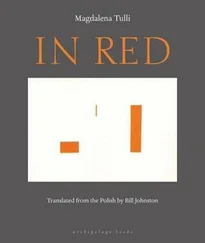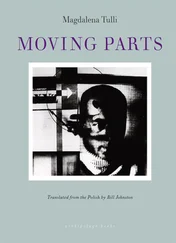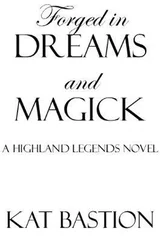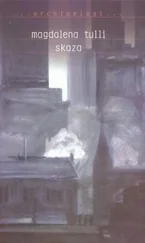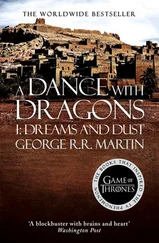Magdalena Tulli
Dreams and Stones
THE TREE OF THE WORLD, LIKE EVERY OTHER TREE, at the beginning of the season of vegetation puts out tiny delicate golden leaves which with time acquire a dark green hue and a silvery sheen. Then they become yellow and red as if they were burning in a live flame and when they have burned their last they go brown and fall to earth ragged and full of holes, akin to pieces of paper turned to ash or rusted-through tin cans. From the first moments when the greenery is freshest and the greatest number of birds are singing amongst the branches a damp and dark countertree is growing into the depths of the earth, infested with vermin. The underground trunk is an extension of the trunk above ground; every bough is connected by an invisible water duct to a counterbough oppressed by tons of earth.
As the season of vegetation draws to a close the tree of the world is laden with fruit. The fruit ripens, falls and rots. In each fruit there is a seed and in that seed the germ of the tree and the countertree, crown and root. All the future seasons of vegetation await their turn in the seeds, in the germs, in the germs of the germs. The fruit belongs to the tree but contains within itself a whole future tree along with the fruit that will grow upon it.
The cities that ripen on the tree of the world are enclosed in shape like apples. Each is the same: Every one is different. An embodiment of a singular possibility from the register of the possible is the very name written above the railroad platforms. One river — a second is unnecessary — fixes its course definitively once and for all. One list of streets, one zoological garden. The inhabitants know by heart the colors of the clouds and of the plaster. Whatever comes to be can no longer be any different. When one thing is given to them another must be taken away. Every glance of theirs is accompanied by an awareness of loss. Crossing the city, they keep feverishly imagining what could yet be. If for instance the river flows broad and sluggish, passing shoals of sand, sooner or later they will create the other river, which was not given to them, deep and rapid, with steep banks overgrown with weeds. And so when the city germinates, when it ripens and when it rots, it contains within itself all possibilities at once, and the entire plan of the world. It is part and whole, infinitude and a godforsaken backwater, a particle in the world and at the same time an abyss into which the world vanishes — tiny as a fly in the ointment. For the rule that governs larger and smaller wholes declares that the small is contained in the large and the large in the small. And it is only thanks to this that the world fitted into itself. And it is only in this way that it can endure. Because otherwise it would have nowhere to go.
When the tree of life burned in a live flame and its leaves turned to ash and fell from its branches it was not long before something began to sprout from a stray seed. Why did it happen at that particular time, why in that place and why in that way? It was determined by the unrepeatable properties of the season, by the quality of the soil and by the winds. It could not have been otherwise. There began to grow simultaneously public buildings and residential buildings, large, medium-sized and smallish, soaring or squat, sumptuous or plain. They grew out from under the earth and climbed upward encased in wooden scaffolding in clouds of lime dust amid confusion and uproar with the creaking of wheelbarrows, the scrape of trowels, sudden warning shouts and the dull thud of falling bricks.
No one knows where the power came from that set all this in motion and caused the walls to thrust upward. Nor how many spadefuls of earth had to be dug out for a single excavation to appear. Nor how much toil is needed before walls appear over the rim of the excavation, to say nothing whatsoever of roofs, window frames or plaster. The destiny of the seed is to swell and sprout; the power that lies within it serves that purpose alone. It is this power that draws the sand and lime into the circulation of substances necessary for the walls to rise. The mounds of loamy soil required faith, like the water that awakens life. Faith filled the hearts of those transporting cement and passing bricks. The mounds of earth absorbed as much of it as they could. At that time there was no shortage of faith, as opposed to knowledge, of which it seems there was as yet little. For only a person who did not know the dimensions of the task that had been undertaken could dig like this without fear in the face of the avalanche of further obligations that would inevitably be unleashed. There was only one way it could have been stopped: by filling in the excavations as quickly as possible so that there was nothing left to complete.
Not one doubt clouded their minds; the bricklayers believed in the vertical and the horizontal and also in mortar. And they believed firmly that everything the mind creates (even safety pins, even rosin) ought to exist in the world. No one doubted that in a city there should be streets and so also water carts to sprinkle the streets on hot days when they get dusty. And trams and trucks that would drive day and night from one suburb to another and back again. That it was necessary to create chauffeurs, mechanics, drivers and ticket collectors, nurses and police officers.
In order to summon this whole throng to life it was enough to sew denim overalls, white aprons with stiff caps and uniforms of gray woolen cloth. But machines were required to produce the yarn and to stitch the clothes and also needles, tailors’ shears and so on. The world had barely appeared yet already everything was needed, and immediately too. Necessary things and the tools essential in their manufacture, without distinction, preferably at the same time. And raw materials: steel, coal, kerosene, paper and ink, not forgetting the yellow oil paint for painting the walls in waiting rooms.
Such a great accumulation of urgent needs engendered frenetic haste, tension and uncertainty. For what ought to come first, the lathe or the screw for it, the cast iron or the great furnace, the egg or the hen? The world had only just emerged from its primordial chaos when it found itself at once faced with a colossal task fit for the hands of giants, a task as vast as the world itself and laborious as the threading of a needle; a job whose boundlessness swallowed without a trace the first spadefuls of earth removed from where the foundations of future factories were to be laid.
Ebonite telephones were produced, into which people had to shout at the top of their lungs, covering one ear with a hand; and cardboard folders tied with ribbons; great black typewriters; indelible pencils; and many other things. There appeared massive inkstands made of thick glass, wooden blotters lined with blotting paper that bore navy blue stains, mounts for pen nibs and the nibs themselves. The furniture smelled of fresh polish. The dark red of signs blossomed on the walls, proclaiming the advent of times of granite and sandstone on slabs that weighed two tons apiece: the beginning of the era of immense blocks of gray marble and all other durable building materials, grand in nature, as if they had been created for the decoration of monumental façades and interiors. The core of the city however was a round billion of red bricks, more real than anything else at all. Each of them had passed through many hands and all disappeared beneath the plaster and the sandstone facing. Coarse fragments remained which children would play with in the courtyards for a long time to come.
In those happy times all future days seemed altogether fresh and tidily arranged, like young leaves that have not yet emerged from the bud. Every boy would become a pilot and every little girl a schoolteacher. And in the school cloakrooms leather flying caps hung in anticipation, while on every scrap of concrete there appeared classrooms crookedly outlined in white chalk. Everything was possible. The world looked orderly, the foundations were deep, the walls thick, the pipes brand new. At the thought of “the world” what came to mind was above all that which can be touched: walls and pipes, loose sand, soft clay, cold water, rough fragments of red brick, lime dust. And that which can only be observed from afar, but which always returns to its place at the proper time of the day and year: the sun and the stars in the sky, the flag fluttering in the breeze. And also that which is always there and about which one never thinks: the air in one’s lungs, the earth underfoot. It was trodden confidently, in certainty that it truly existed.
Читать дальше

